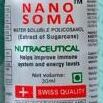Unlocking the Secrets of Vitamin D Receptors: The Key to Bone Health?
Vitamin D is often celebrated as a vital nutrient for bone health, but the mechanisms underlying its efficacy are less commonly discussed. At the heart of vitamin D’s role in bone metabolism are vitamin D receptors (VDRs), which work as cellular gatekeepers that mediate the effects of vitamin D throughout the body. Understanding these receptors is crucial for unlocking the full potential of vitamin D in maintaining and enhancing bone health.
The Role of Vitamin D in Bone Health
Vitamin D is essential for maintaining bone density and integrity. It facilitates the absorption of calcium and phosphorus in the gut—two minerals that are fundamental for bone formation and maintenance. A deficiency in vitamin D can lead to impaired bone mineralization, resulting in conditions such as osteoporosis and rickets in children.
What Are Vitamin D Receptors?
Vitamin D receptors are proteins found in various tissues across the body, including the intestines, kidneys, and, notably, bone cells. These receptors belong to the nuclear receptor superfamily and function by binding to vitamin D and initiating a cascade of biological responses. When vitamin D enters the bloodstream, it is converted into its active form, calcitriol (1,25-dihydroxyvitamin D), which then binds to VDRs and orchestrates various processes that support bone health.
Mechanisms of Action
Once calcitriol binds to the VDR, the receptor undergoes a conformational change that allows it to interact with specific DNA sequences in target genes, ultimately regulating their expression. This action influences several Key mechanisms of bone metabolism:
-
Calcium and Phosphorus Homeostasis: VDRs enhance the intestinal absorption of calcium and phosphorus, crucial elements for bone mineralization.
-
Osteoblast and Osteoclast Function: VDRs are present in osteoblasts (bone-forming cells) and osteoclasts (bone-resorbing cells). Activation of VDR in osteoblasts stimulates the production of osteocalcin—a protein necessary for bone mineralization—while downregulating factors that promote osteoclastogenesis, thereby balancing these two functions and ensuring healthy bone remodeling.
-
Hormonal Regulation: Vitamin D influences parathyroid hormone (PTH) levels, which plays a critical role in calcium homeostasis. Proper PTH regulation is pivotal for bone health, making the interaction between vitamin D and its receptors crucial in this hormonal feedback loop.
- Gene Expression: VDR activation influences the expression of various genes that regulate cell growth, immune function, and inflammation, all of which can have indirect effects on bone health.
The Impact of VDR Polymorphisms
Research has shown that genetic variations in the VDR gene, known as polymorphisms, can affect bone density and the risk of fractures. Some studies suggest that specific VDR polymorphisms are associated with an increased susceptibility to osteoporosis and other bone-related disorders. Thus, understanding an individual’s VDR genetic makeup could guide personalized management strategies for preventing and treating bone diseases.
Vitamin D Receptor Agonists: A Therapeutic Angle
Given the critical role of VDRs in bone health, they present an attractive target for therapeutic intervention. Researchers are exploring vitamin D receptor agonists—compounds that can activate VDRs—to develop novel treatments for osteoporosis and other bone-related conditions. These compounds aim to mimic the effects of vitamin D, potentially offering safer and more effective ways to enhance bone density without the side effects associated with current osteoporosis medications.
Conclusion
Vitamin D receptors hold the key to understanding the intricate relationship between vitamin D, mineral metabolism, and bone health. As we continue to unravel the complexities of these receptors and their pathways, the potential for improving bone health through targeted therapies and personalized nutrition strategies becomes increasingly apparent. Ensuring sufficient vitamin D levels, understanding individual variations in VDRs, and exploring receptor-targeted treatments may very well be the cornerstones of future approaches to bone health and disease prevention.
